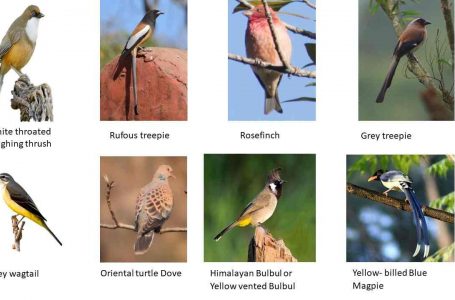Why do some animals hibernate during the winter
It is very difficult for most animals to find enough food in winters when the main source of food like insects or green plants is in short supply. Some animals solve this problem by hibernating.
Hibernation is a deep sleep adaptation mechanism that helps such animals to save energy and survive the winter without consuming much food. Many physiological changes occur in the body of the animals during hibernations where the animal’s body temperature drops and its heartbeat and its breathing slow down so that energy can be conserved. However, some animals such as skunks, raccoons and some chipmunks are light sleepers and are easily awakened. They may sleep during the most severe weather and wake to roam and eat during milder weather.
Most hibernators prepare in some way for the winter. While some store food in their burrows or dens to eat when they awake for short periods during the hibernation, many animals eat extra food before winters (while it is plentiful) and store it as body fat to be used later for generation of energy.
Hibernators have two kinds of fat: regular white fat and a special brown fat (brown adipose tissue). The brown fat forms patches near the animal’s brain, heart and lungs. Its main purpose is to provide extra body heat and also sends a quick burst of energy to warm these organs first when it is time to wake up after the hibernation as these are vital organs for survival.
Table of Contents
Animals that hibernate
Some animals which hibernate are jumping mouse, little brown bat, the eastern chipmunk, some species of ground squirrels, wood frog, deer mice, skunks, hamsters, prairie dogs and hedgehogs. A species of bird called the gray and white poor will are also considered to be true hibernators.
The largest hibernators are bears which are unique because unlike other hibernators, they do not eat, drink, or excrete at all while hibernating, which can be as long as six months.
What do other animals do to survive in the winter?
Different animals have different mechanisms to adapt to the harsh winter climate or survive through it. While some animals hibernate, there are some other animals that follow the following adaptations:
Migrate
Some of the animals migrate. Migration is a process where animals travel to other places where the weather is warmer or where they can find food. Many birds migrate before winters. Some birds such as geese travel in large flocks as the travel may be dangerous, while other kinds of birds fly alone.
Birds can fly very long distances. For example, the Arctic tern nests close to the North Pole in the summer. In autumn, it flies to south Antarctica – which is at the other end of the world! Each spring it returns north again.
Other animals which also migrate are mammals such as some bats, caribou, elk and whales that travel in search of food each winter.
Adapt
Some animals remain and stay active in the winter by adapting to the changing weather by making changes in their behavior or bodies. To keep warm, animals may grow new, thicker fur. Weasels and snowshoe rabbits grow new white fur to help them hide in the snow.
Some animals like squirrels, mice and beavers gather extra food and store it to eat later. Some, like rabbits and deer, spend winter looking for moss, twigs, bark and leaves to eat. Other animals eat different kinds of food as the seasons change. The red fox eats fruit and insects in the spring, summer and autumn and in winter, it eats small rodents.
Other Ways to Survive
Cold-blooded animals like fish, frogs, snakes and turtles have no way to keep warm during the winter. Snakes and many other reptiles find shelter in holes or burrows and spend the winter inactive, or dormant. This is similar to hibernation.
Water makes a good shelter for many animals. When the weather gets cold, they move to the bottom of lakes and ponds. Frogs, turtles and many fish hide under rocks, logs or fallen leaves. They may even bury themselves in the mud and become dormant. Cold water holds more oxygen than warm water and the frogs and turtles can breathe by absorbing it through their skin.





